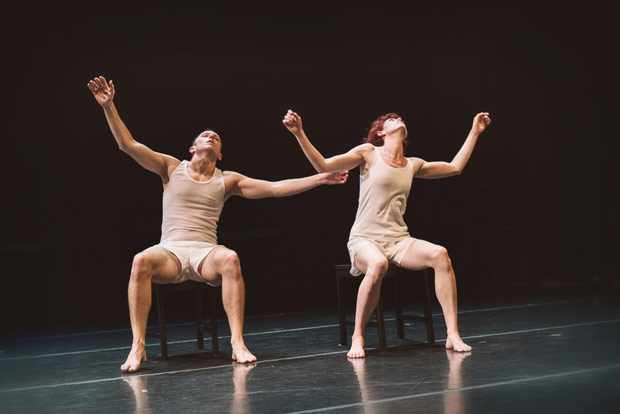
© Andrew Weeks. (Click image for larger version)
RAWdance
Double Exposure (premiere)
★★★★✰
San Francisco, ODC Theater
28 July 2016
rawdance.org
www.rawdance-doublex.org
odcdance.org
Sixteen choreographers, 13 new works, 2 dancers, 70 minutes, 4 years in the making. That’s the equation for Double Exposure, premiered by the San Francisco contemporary-dance duo RAWdance on Thursday, July 28. It’s an epic production that is greater than the sum of its parts.
By way of a survey of West Coast choreography, RAW directors Ryan Smith and Wendy Rein commissioned dance makers from Seattle to Los Angeles to create 2- to 4-minute duets on them, and the time limit was the only boundary. The duets are untitled, identified only by the choreographers’ names projected on the back wall of ODC Theater.

© Andrew Weeks. (Click image for larger version)
The choreographers’ West Coast orientations vary: David Roussève feels limitless creative freedom here, while Shinichi and Dana Iova-Koga are “still coming to an understanding of what it means.” Danced to Aretha Franklin’s recording of “A Change Is Gonna Come,” Roussève’s duet built slowly in speed and intensity toward a clip of the horrific 2015 police shooting of Walter Scott in North Carolina (we have similar horrors on the West Coast). In the Iova-Kogas’ Butoh-influenced work, Smith stands holding a tree branch aloft while Rein, topless and curled at his feet, evokes a rolling river with the undulations of her back; they could be anywhere.
Their styles vary, too. KT Nelson peeled the duo down to shorts and tank tops for a blitz of undulating rond de jambs, floor rolls and expansive arms, Holly Johnston drew out hyperkinetic acrobatics. Wearing nude swimsuits, Smith and Rein wrestled, grunting and gasping, and robotted in Tahni Holt’s duet; in loose pants, they transitioned to Casebolt and Smith’s specific gestures and slack-armed hops that recalled Trisha Brown. Amy O’Neal, Amy Seiwert and Kate Wallich took a more lyrical approach; in Wallich’s piece, Rein and Smith danced in mechanic’s coveralls and elegant unison.
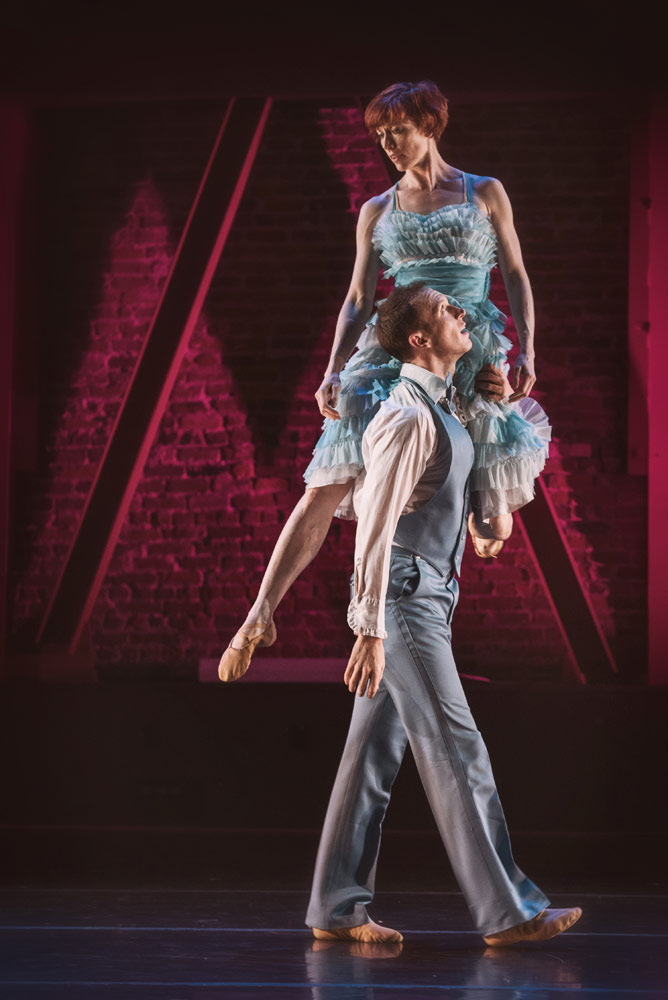
© Andrew Weeks. (Click image for larger version)
Rein and Smith are in their mid-thirties and have known each other since meeting as Brown University undergraduates; they are best friends and housemates as well as creative partners. They finish each other’s sentences and complete each other creatively. They are also consummate contemporary dancers who know each other’s bodies and minds with rare intimacy. They choreographed the evening’s first duet, which was an appropriate opening but, oddly enough, the least revealing work.
The real reveal of Double Exposure is not an index of the West Coast choreographic point of view – if anything, this unscientific sample shows how nose-thumbingly motley our contemporary dance scene is – but the intelligence and versatility of Smith and Rein as artists. Few dancers could conjure two-minute universes that range from hard-hitting (Johnston) to cerebral (Holt) to lyrics-driven (Seiwert) and make you believe each one; perhaps only these two would even try.
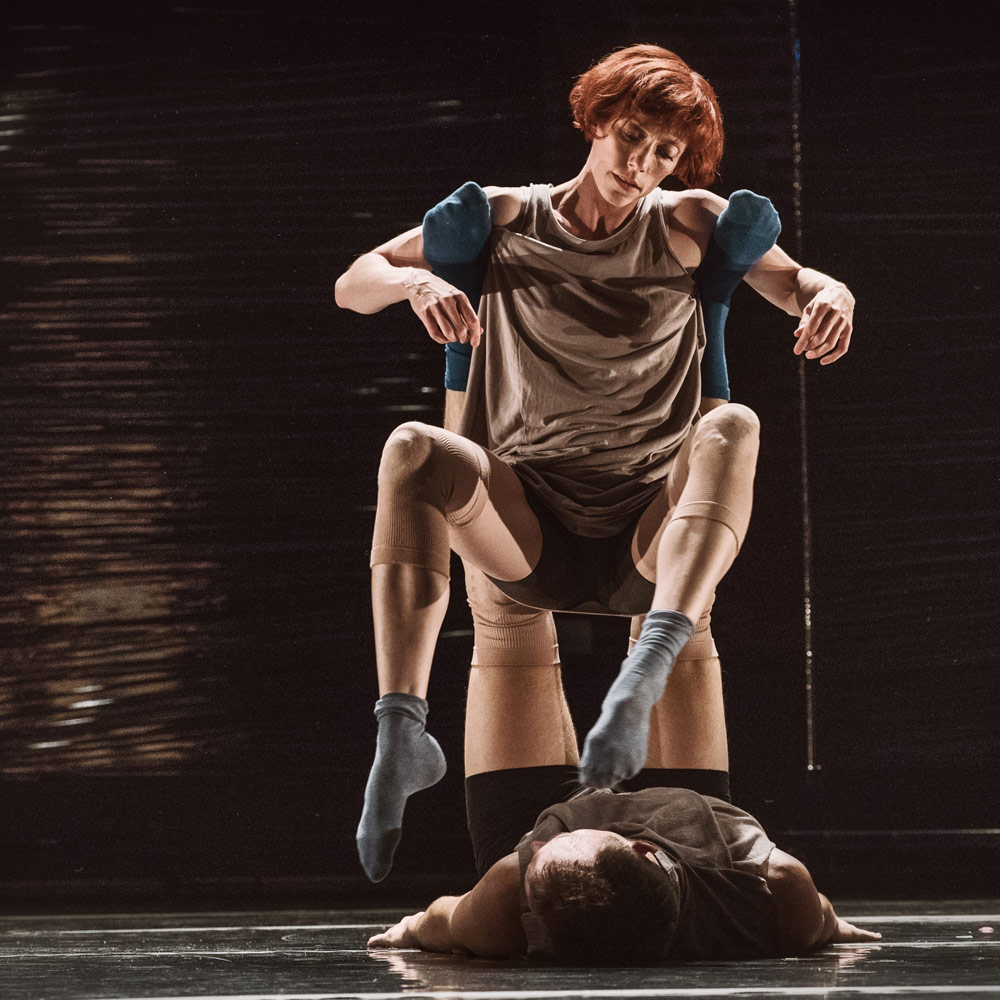
© Andrew Weeks. (Click image for larger version)
Because there is apparently nothing Smith and Rein can’t do, dance-theater came into play as well: Monique Jenkinson | Fauxnique’s campy, chiffon-draped voguing and hip thrusts; Ann Carlson’s evocation of dysfunctional children (or were they old men?) sitting on a stoop, with ritualistic gestures and hacking coughs in unison; Joe Goode’s danced exposition, with Smith describing Rein’s talent for making pie crust and her retort about his fondness for unicorns and piñatas.
Throughout Double Exposure, Smith and Rein animated between-dance transitions and onstage costume changes with live and videotaped conversation about the collaborations (“clearly, postmodernism has had a strong effect on all of us”), each other (social anxiety and Police Academy movies) and their hopes for the experiment (“it’s about trying to give a glimpse of beauty”). The script is where Double Exposure falters. In person, Rein and Smith are witty extemporaneous speakers; the overly wordy dialog (uncredited in the program) is a rushed jumble, oddly unnatural sounding in the context of such a deeply personal dialog in movement.
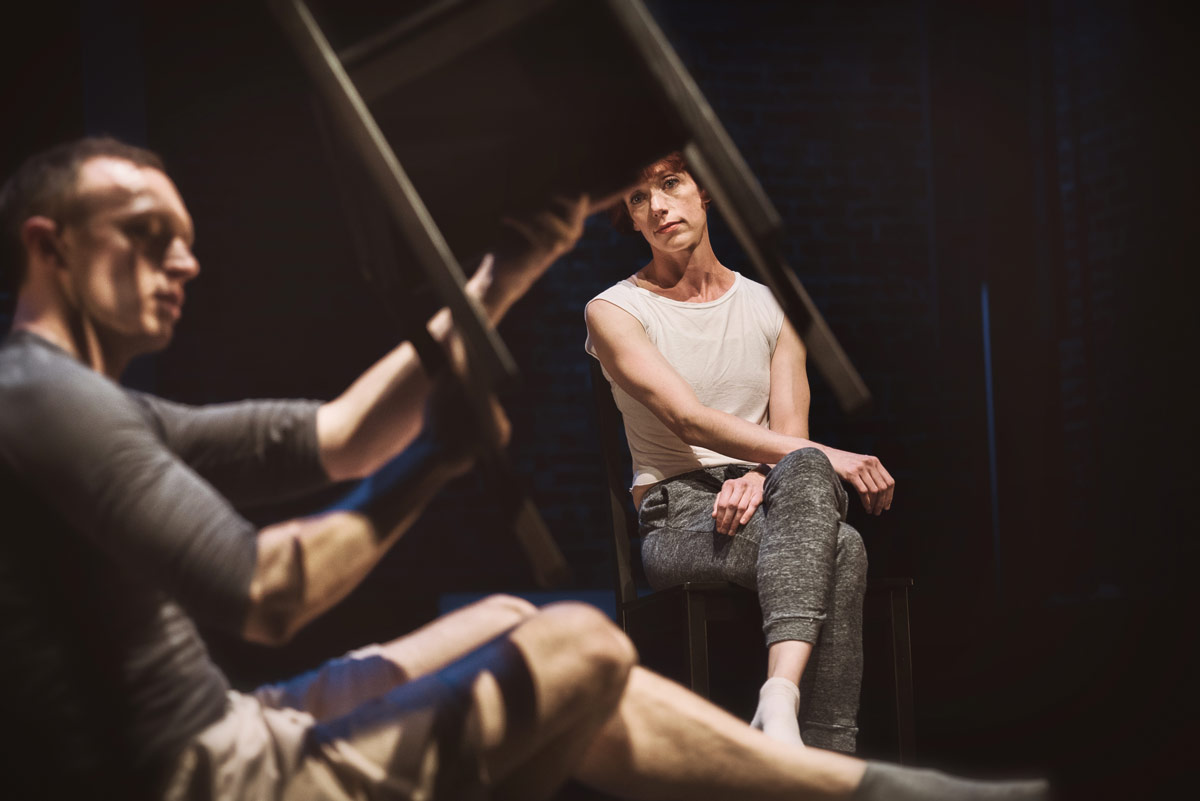
© Andrew Weeks. (Click image for larger version)
Musical accompaniment in Double Exposure was as varied as the dancing and costumes, and ranged from silence to Mozart to Kevin Johansen’s country-waltz version of David Bowie’s “Modern Love.” It was up to scenic designer Sean Riley and lighting designer Jim French to weave the varied threads together. Riley’s rolling panels, wrapped in shiny black plastic, served as tabula rasa set pieces, while French created spaces within the black-box space using colored uplights, geometric floor projections, stark downlights and floor-level spots, transitioned with masterful subtlety.
In August, the East Coast will sample the West Coast when Smith and Rein perform excerpts from Double Exposure at Jacob’s Pillow. From there, this duo could go just about anywhere.






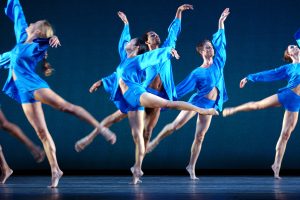

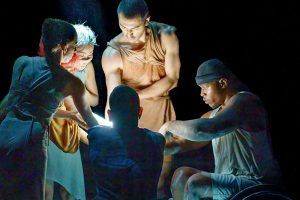

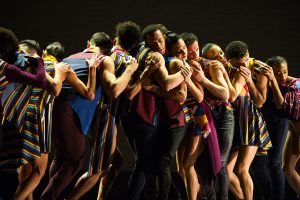

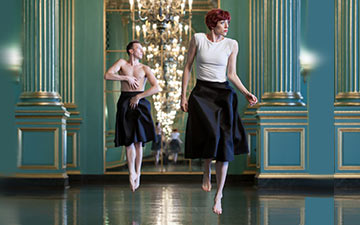



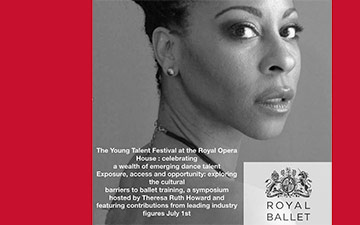
You must be logged in to post a comment.